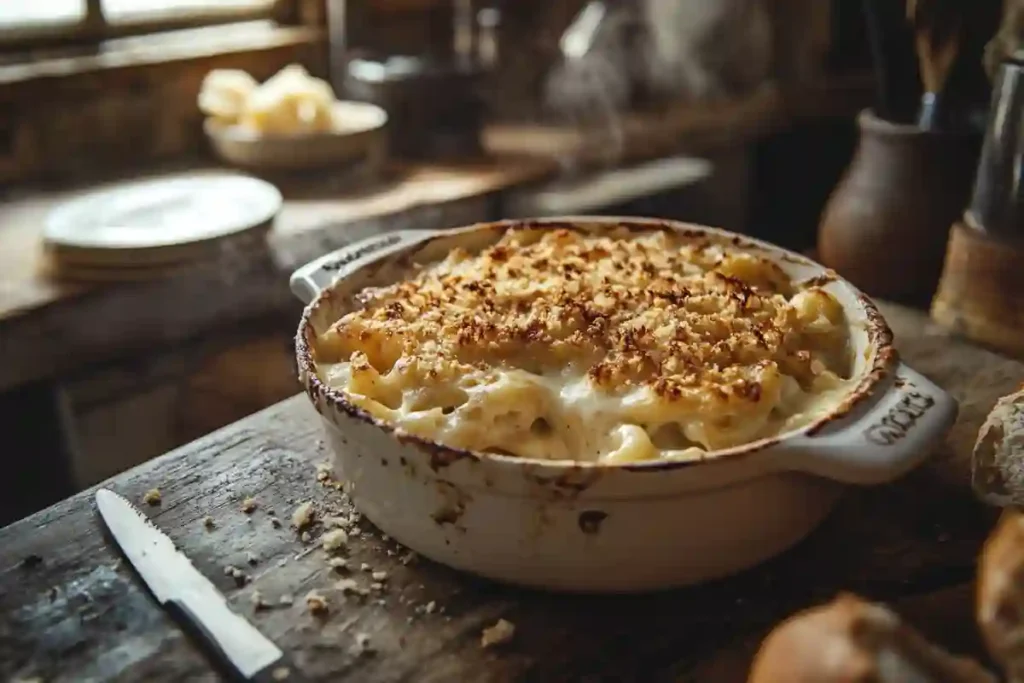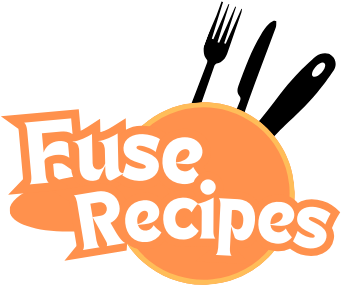Smoked mac and cheese is a beloved comfort dish, elevated by the rich, smoky flavors that infuse the creamy pasta. Choosing the best wood for smoking mac and cheese is essential to achieving the perfect taste. Different woods impart unique flavors, and understanding their characteristics can transform your dish from ordinary to extraordinary.
Introduction : What is the Best Wood for Smoking Mac and Cheese?
Smoking mac and cheese requires a balance between the wood’s intensity and the dish’s rich, cheesy profile. This article explores the top wood options for smoking mac and cheese, their flavor profiles, and tips for achieving the best results. Whether you’re a beginner or a seasoned smoker, this guide will help you create a dish everyone will rave about.

The Basics of Smoking Mac and Cheese
Why Smoke Mac and Cheese?
Smoked mac and cheese combines the creamy texture of classic recipes with bold, complex flavors. The smoky aroma adds depth and a gourmet twist to this comforting favorite.
Key Factors to Consider:
- The type of cheese used (sharp cheddar, gouda, or mozzarella blend well with smoke).
- The smoking duration (usually 1–2 hours at low heat).
- Choosing the right wood is crucial for balancing flavors.
Top Woods for Smoking Mac and Cheese
1. Applewood
Applewood is one of the most popular choices for smoking mac and cheese. Its mild, sweet flavor pairs beautifully with creamy cheese, enhancing the dish without overpowering it.
Key Benefits:
- Light sweetness adds a fruity note.
- Suitable for people who prefer a subtle smoky taste.
Best Pairings:
- Works well with mild cheeses like mozzarella or Monterey Jack.
- Complements additional ingredients like bacon or ham.
2. Hickory
Hickory wood delivers a bold, smoky flavor that stands out. It’s an excellent choice if you prefer a robust taste in your mac and cheese.
Key Benefits:
- Adds a rich, smoky aroma.
- Ideal for heavier, creamier recipes.
Best Pairings:
- Sharp cheddar or gouda balances the intense flavor.
- Matches well with meat-heavy toppings like brisket or pulled pork.
3. Cherrywood
Cherrywood offers a mild yet slightly fruity flavor that complements the creaminess of mac and cheese.
Key Benefits:
- Gentle smoke flavor with a hint of sweetness.
- Adds a visually appealing reddish hue to the dish.
Best Pairings:
- Pairs with cheeses like brie or havarti for a gourmet twist.
- Enhances recipes with sweet add-ins, such as caramelized onions.
Other Wood Options to Consider
4. Pecan
Pecan wood has a nutty, sweet flavor that aligns perfectly with the creamy richness of mac and cheese.
Key Benefits:
- Subtle sweetness without overwhelming the dish.
- Ideal for family-friendly recipes.
5. Mesquite
Mesquite wood is known for its strong, earthy flavor. While it’s more intense, it can be used sparingly for bold mac and cheese lovers.
Key Benefits:
- Imparts a bold, smoky essence.
- Best for recipes featuring spicy or smoked meats.
Tips for Perfectly Smoked Mac and Cheese
- Pre-Smoke the Ingredients: Smoke your cheese or breadcrumbs separately for an extra layer of flavor.
- Keep the Heat Low: Use a smoker set to 225°F–250°F to avoid burning the cheese.
- Experiment with Blends: Combine woods like apple and hickory for a unique flavor profile.
Synonyms and Flavor Notes for Keyword Variation
- Best smoking wood for cheesy pasta
- Top wood types for smoked dishes
- Optimal wood for smoky mac and cheese recipes
Common Pitfalls to Avoid
- Over-smoking: Too much smoke can overpower the dish, leading to a bitter aftertaste.
- Choosing Overpowering Woods: Stick to mild or medium-strength woods for balance.
Combining Wood Types for Enhanced Flavor
Blending different types of wood can result in a more nuanced, layered flavor for smoked mac and cheese. This technique is particularly helpful when catering to diverse palates or trying to highlight specific ingredients in your recipe.
Popular Wood Blends:
- Applewood + Hickory: A mix of mild sweetness and bold smokiness, perfect for recipes featuring cheddar or gouda.
- Cherrywood + Pecan: Combines fruity notes with a subtle nuttiness, enhancing lighter cheeses like havarti or brie.
- Maple + Oak: A balanced blend of sweetness and robust flavors, ideal for rich and creamy sauces.
Wood Flavor Profiles and Their Impact on Mac and Cheese
1. Applewood:
- Flavor Profile: Sweet, mild, and fruity.
- Impact: Enhances creaminess without overwhelming delicate cheese flavors.
- Ideal For: Family-friendly recipes, kids’ favorites, or mac and cheese with bacon.
2. Hickory:
- Flavor Profile: Strong, smoky, and slightly bacon-like.
- Impact: Adds a rich, hearty aroma, perfect for meat-heavy versions.
- Ideal For: Smoky BBQ-inspired recipes.
3. Cherrywood:
- Flavor Profile: Slightly sweet with fruity undertones.
- Impact: Subtle yet flavorful, cherrywood enhances the dish’s color with a reddish tint.
- Ideal For: Gourmet mac and cheese with unique cheeses or sweet toppings.
4. Pecan:
- Flavor Profile: Nutty, sweet, and mild.
- Impact: Balances richness without dominating the dish.
- Ideal For: Classic mac and cheese or recipes with breadcrumbs.
5. Mesquite:
- Flavor Profile: Bold, earthy, and intense.
- Impact: Imparts a strong smokiness, ideal for adventurous palates.
- Ideal For: Recipes with spicy or smoky meats, such as chorizo.
Step-by-Step Guide to Smoking Mac and Cheese
To achieve perfectly smoked mac and cheese, follow these step-by-step instructions.
1. Prepare the Ingredients
- Use high-quality cheeses (e.g., sharp cheddar, gouda, or Monterey Jack).
- Boil pasta al dente to prevent overcooking during smoking.
2. Preheat the Smoker
- Set the smoker to 225°F–250°F.
- Choose the wood based on your flavor preferences (e.g., applewood for mild sweetness).
3. Assemble the Dish
- Mix the cooked pasta with cheese sauce in a heat-resistant dish.
- Top with smoked cheese, breadcrumbs, or bacon bits for added texture.
4. Smoke the Mac and Cheese
- Place the dish in the smoker.
- Smoke for 1–2 hours, checking periodically to avoid overcooking.
5. Finishing Touches
- Broil briefly for a crispy topping.
- Serve immediately for the best flavor and texture.
Pro Tips for First-Time Smokers
- Use a Smoker Box: If you’re using a gas or charcoal grill, a smoker box can mimic the effects of a traditional smoker.
- Monitor the Heat: Keep the temperature consistent to prevent the cheese from separating.
- Experiment with Add-Ins: Consider adding jalapeños, sun-dried tomatoes, or smoked sausage for variety.
Enhancing Smoked Mac and Cheese with Additional Ingredients
Adding complementary ingredients can elevate smoked mac and cheese to a gourmet dish. Here are some ideas to inspire your next recipe:
- Proteins: Pulled pork, smoked chicken, or crispy pancetta.
- Vegetables: Roasted peppers, caramelized onions, or grilled mushrooms.
- Toppings: Panko breadcrumbs, fresh herbs, or a drizzle of truffle oil.
Advanced Techniques for Smoking Mac and Cheese
Cold Smoking:
- Smoke the cheese at a low temperature (below 90°F) before making the mac and cheese.
- This method infuses the cheese with a subtle smokiness, perfect for lighter recipes.
Reverse Searing:
- Smoke the dish first, then finish it in the oven under high heat for a golden, bubbly crust.
Advanced Tips for Perfect Smoked Mac and Cheese
Smoking mac and cheese can be as simple or sophisticated as you want it to be. With a few advanced tips, you can elevate this dish to a culinary masterpiece.
1. Layering Smoke Flavors
- Use wood chips in stages. Start with a milder wood like applewood for the first hour, then finish with a stronger wood such as hickory for depth.
- Rotate the dish halfway through smoking to ensure even smoke distribution.
2. Using a Water Pan
- Add a water pan to your smoker. This creates a humid environment that prevents the mac and cheese from drying out while intensifying the smoky flavor.
3. Pre-Soaking Wood Chips
- Soak wood chips in water, apple cider, or beer for 30 minutes before smoking.
- This technique produces a longer, slower burn for sustained smoke.
4. Incorporating Cold-Smoked Ingredients
- Cold-smoke your cheese or breadcrumbs separately and assemble the dish later.
- This adds an additional layer of complexity to the final flavor.
Common Mistakes to Avoid When Smoking Mac and Cheese
While smoking mac and cheese is relatively straightforward, there are common pitfalls to watch out for:
- Overpowering the Dish with Smoke:
- Use a light to moderate amount of wood chips. Too much smoke can result in a bitter taste.
- Ignoring Temperature Control:
- Keep the smoker at a consistent low temperature (225°F–250°F). Overheating can cause the cheese to separate and the pasta to overcook.
- Skipping the Resting Period:
- Allow the dish to rest for 5–10 minutes after smoking. This step lets the flavors meld and ensures a creamier texture.
Adding Regional Influences to Smoked Mac and Cheese
Smoked mac and cheese is versatile and can be tailored to reflect various regional flavors. Infuse unique culinary traditions into your dish for a personalized twist.
Southern-Style Smoked Mac and Cheese
- Wood: Pecan or hickory for a rich, nutty flavor.
- Ingredients: Add smoked sausage, collard greens, or crispy bacon.
- Toppings: Use cornbread crumbs instead of regular breadcrumbs for a southern flair.
Tex-Mex Smoked Mac and Cheese
- Wood: Mesquite for a bold, earthy flavor.
- Ingredients: Incorporate spicy chorizo, jalapeños, and a blend of Mexican cheeses like queso fresco and pepper jack.
- Toppings: Garnish with diced tomatoes, cilantro, and a dollop of sour cream.
Mediterranean-Inspired Smoked Mac and Cheese
- Wood: Olive or almond wood for a mild, aromatic flavor.
- Ingredients: Mix in sun-dried tomatoes, artichoke hearts, and crumbled feta cheese.
- Toppings: Finish with a sprinkle of oregano and a drizzle of olive oil.
Smoked Mac and Cheese for Special Diets
Adapting smoked mac and cheese for dietary preferences is simple with a few substitutions. Here’s how to make it inclusive for everyone:
Gluten-Free Smoked Mac and Cheese
- Pasta Substitution: Use gluten-free pasta made from rice, quinoa, or chickpeas.
- Breadcrumbs: Opt for gluten-free breadcrumbs or crushed nuts for a crunchy topping.
- Wood Recommendation: Cherrywood adds mild sweetness without overpowering delicate gluten-free ingredients.
Vegan Smoked Mac and Cheese
- Cheese Substitution: Use plant-based cheese alternatives made from cashews or almonds.
- Milk Substitution: Choose almond milk or coconut milk for creaminess.
- Wood Recommendation: Applewood complements vegan ingredients with a subtle, fruity smoke.
Low-Carb/Keto Smoked Mac and Cheese
- Pasta Substitution: Replace pasta with cauliflower florets or zucchini spirals.
- Toppings: Add extra cheese and pork rinds instead of breadcrumbs for a crunchy crust.
- Wood Recommendation: Hickory adds boldness to offset the lighter base ingredients.
The Role of Smoke Intensity in Flavor Development
Understanding the intensity of smoke helps you customize the flavor profile of your mac and cheese. Different woods offer varying levels of smokiness, allowing you to experiment based on your preferences.
Mild Smoke Intensity
- Best Woods: Applewood, cherrywood, or maple.
- Flavor Profile: Subtle, sweet, and fruity.
- Ideal For: Light and creamy mac and cheese recipes.
Medium Smoke Intensity
- Best Woods: Pecan, oak, or alder.
- Flavor Profile: Nutty and slightly robust without being overwhelming.
- Ideal For: Cheddar-based mac and cheese with meaty add-ins like bacon or ham.
Strong Smoke Intensity
- Best Woods: Hickory or mesquite.
- Flavor Profile: Bold, earthy, and smoky.
- Ideal For: BBQ-inspired recipes with sharp cheeses and spicy ingredients.
Creative Serving Ideas for Smoked Mac and Cheese
Smoked mac and cheese can be a showstopper when served creatively. Here are a few presentation ideas:
Individual Servings
- Serve in small cast-iron skillets or ramekins for a rustic and charming presentation.
- Top each portion with a unique garnish, such as a sprig of thyme or a dusting of smoked paprika.
Smoked Mac and Cheese Bar
- Create a DIY bar with various toppings like crispy onions, roasted veggies, and shredded meats.
- Provide different smoked versions, such as one with applewood and another with hickory, for guests to compare.
Inside a Hollowed Bread Bowl
- Hollow out a round loaf of sourdough or ciabatta and fill it with smoked mac and cheese.
- Smoke the bread bowl alongside the dish for an extra layer of flavor.
The Science Behind Smoking and Cheese Absorption
The science of smoking mac and cheese revolves around how smoke particles interact with fats and proteins in the dish. Here’s a breakdown of the process:
Fat Absorption
- Cheese’s fat content plays a significant role in absorbing smoke. Higher-fat cheeses like gouda and cheddar retain smokiness better than lower-fat varieties.
Smoke Ring Formation
- While mac and cheese doesn’t form a traditional smoke ring, the top layer of the dish absorbs more smoke. Adding a breadcrumb topping increases surface area for better absorption.
Flavor Compounds
- Woods like apple and cherry contain compounds that infuse the dish with mild, fruity flavors. Stronger woods like hickory produce phenolic compounds, creating bold, smoky tastes.
The FAQs: What is the Best Wood for Smoking Mac and Cheese?
What’s the best way to avoid over-smoking mac and cheese?
Use a small amount of wood chips and limit smoking to 1–2 hours. A light layer of smoke adds flavor without overpowering the dish.
Can I prepare smoked mac and cheese ahead of time?
Yes! Smoke the dish, then refrigerate. Reheat in the oven at 350°F for 20 minutes, covered with foil to retain moisture.
Do certain woods pair better with specific cheeses?
Yes. Mild woods like applewood pair well with mozzarella, while hickory complements bold cheeses like sharp cheddar and gouda.
How do I get a crispy topping on smoked mac and cheese?
Add breadcrumbs or crushed crackers before smoking. Broil the dish for 2–3 minutes after smoking to achieve a golden, crispy crust.
Can I make smoked mac and cheese without a smoker?
Yes. Use a stovetop or oven-safe smoker box with wood chips. Alternatively, use liquid smoke as a shortcut, but sparingly to avoid overpowering the dish.
Conclusion: The Ultimate Guide to Smoky Perfection
Creating the perfect smoked mac and cheese hinges on your choice of wood and careful execution of smoking techniques. Applewood and cherrywood offer mild sweetness, while hickory and mesquite provide bold flavors. By tailoring your ingredients, smoking duration, and serving style, you can craft a dish that’s uniquely yours. Whether for a cozy family dinner or a festive BBQ, smoked mac and cheese is guaranteed to impress.
Related article : Smoked Mac and Cheese: Perfect Recipe for Smoky Comfort

